The Pontcysyllte Aqueduct: Thomas Telford's 'ribbon of water in the sky'
The magnificent Pontcysyllte Aqueduct is one of the great testaments to Industrial Revolution ingenuity — and as beautiful as it is impressive. Jack Watkins takes a look.
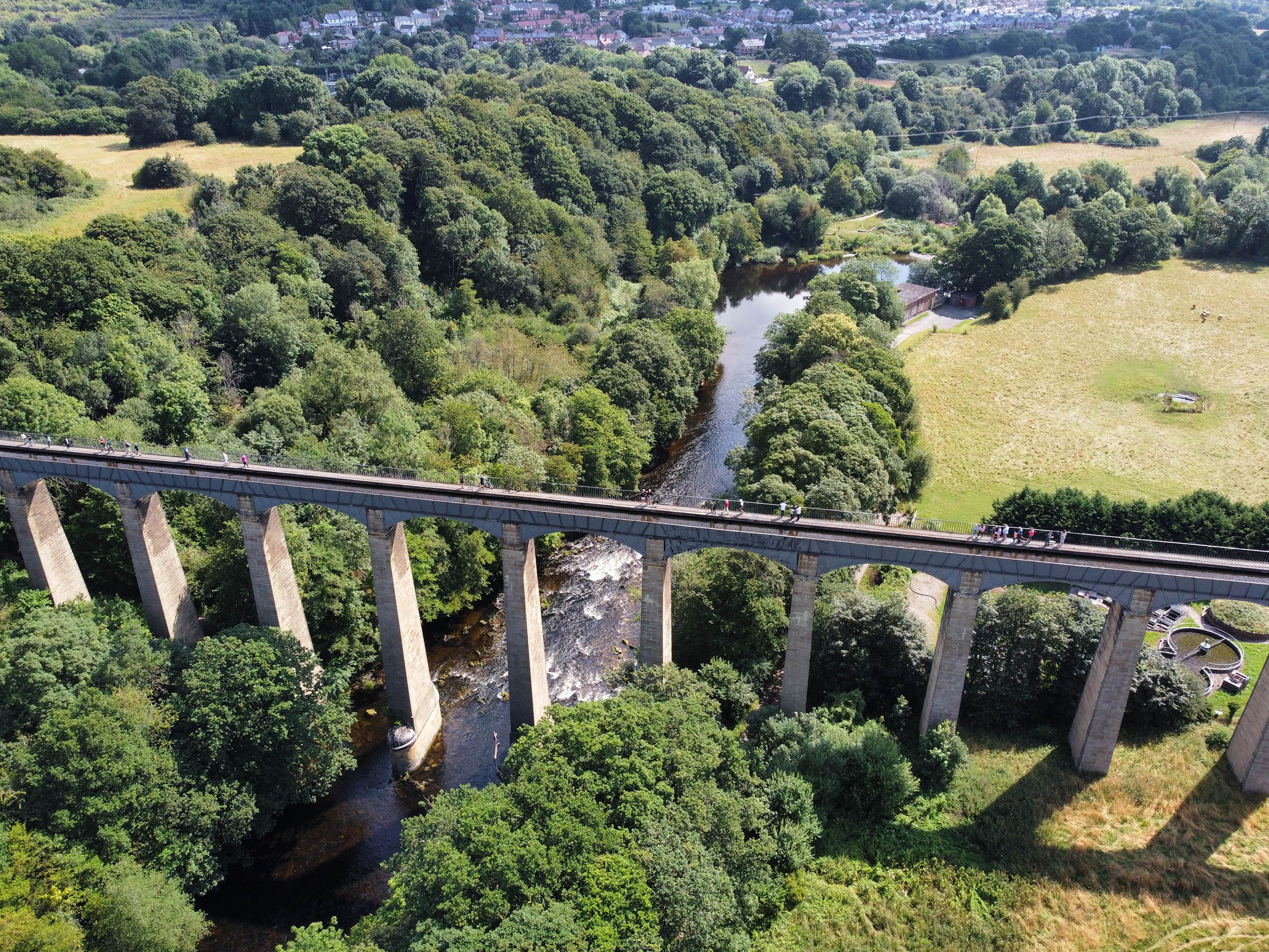

Popular photographs of the Pontcysyllte Aqueduct show walkers blithely passing along its narrow towpath and canal boats inching along an 11ft-wide trough as their occupants airily gaze into the far distance, as if it was the most natural thing in the world to be 130ft up in the air with nothing more than a thin metal handrail on one side and a gaping void on the other between them and the River Dee far below. Not a venture to be undertaken on a gusty day — or for acrophobics on any sort of day.
The UNESCO World Heritage Site citation for the longest and highest navigable waterway in the world (the aqueduct was formally added to the World Heritage List in 2009) describes the Pontcysyllte Aqueduct as ‘a pioneering masterpiece of engineering and monumental architecture by Thomas Telford’. It certainly secured the reputation of Telford as one of the foremost civil engineers of the Industrial Revolution, and has drawn extravagant praise: '‘Of all the stupendous engineering structures produced by the Industrial Revolution, the Pontcysyllte is one of the most extraordinary: a ribbon of water in the sky’ wrote Hugh Pearman in the Wall Street Journal in 2006; while The Victorian Web describes it as a monument 'that reminds us that the Industrial Revolution produced beautiful objects as well as smoke-darkened cities and factories.'
However, although shorthand histories give Telford most of the credit for the work, up to the moment of his appointment, his chief employment had been as an architect and he seems to have had little experience of canal engineering.
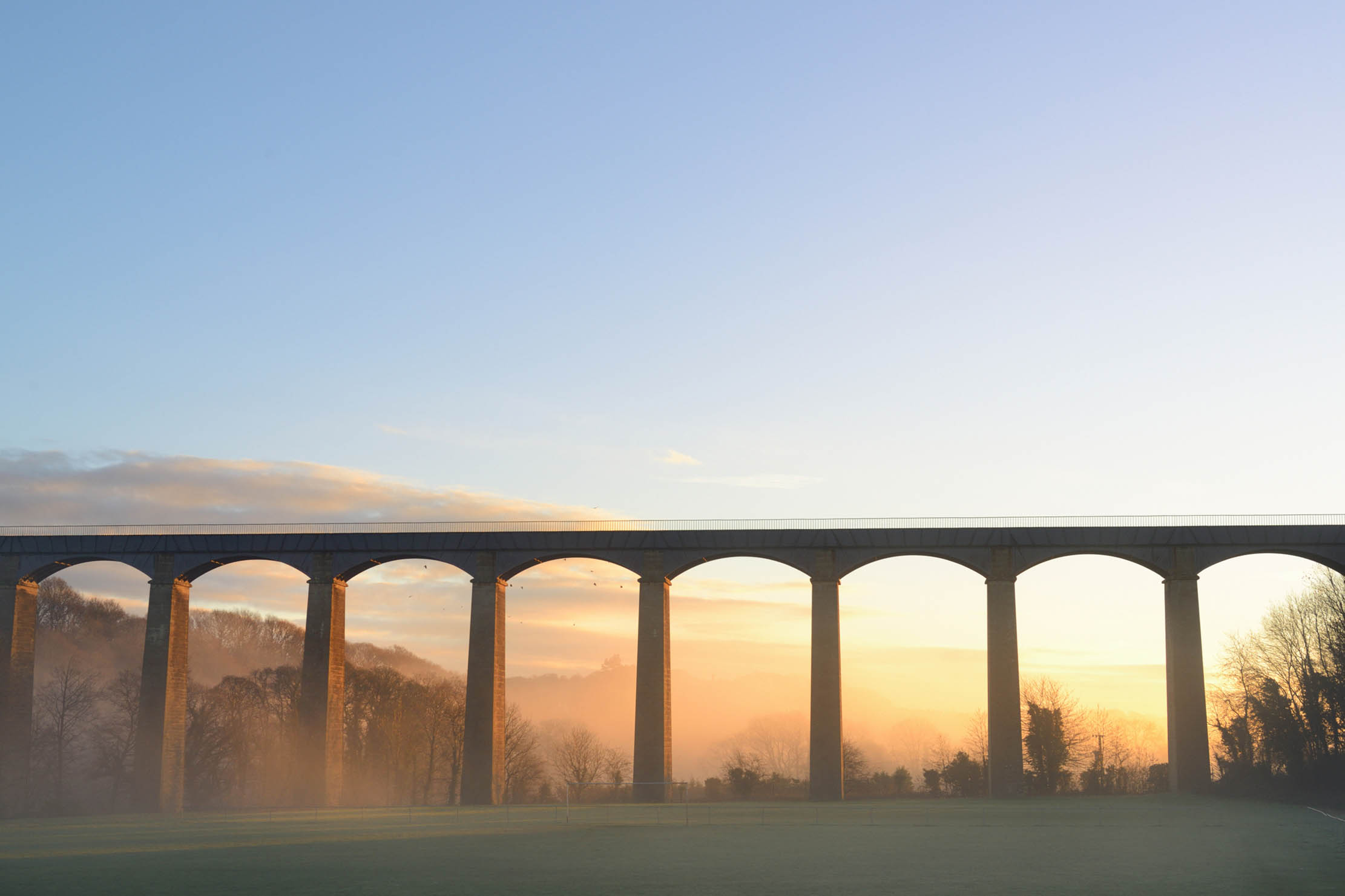
It is, therefore, important to recognise the involvement of another key figure, William Jessop, the leading canal engineer, who almost certainly played a major role in the overall concept and who approved Telford’s designs. Matthew Davidson, a friend from his youthful days in Eskdale, acted as Telford’s assistant and project supervisor; another significant participant was William Hazledine, an experienced ironmaster.
With Jessop, who was initially consulted on the best overall route, acting as chief engineer, Telford was appointed in 1793 as ‘General Agent, Surveyor, Engineer, Architect and Overlooker to the Ellesmere Canal Company’. Built during the height of the ‘canal mania’ between 1790 and 1810, the aqueduct arose out of a plan to link the Ellesmere Canal (now known as the Llangollen Canal) with the Mersey, Dee and Severn rivers and the coal mines and ironworks of North Wales.
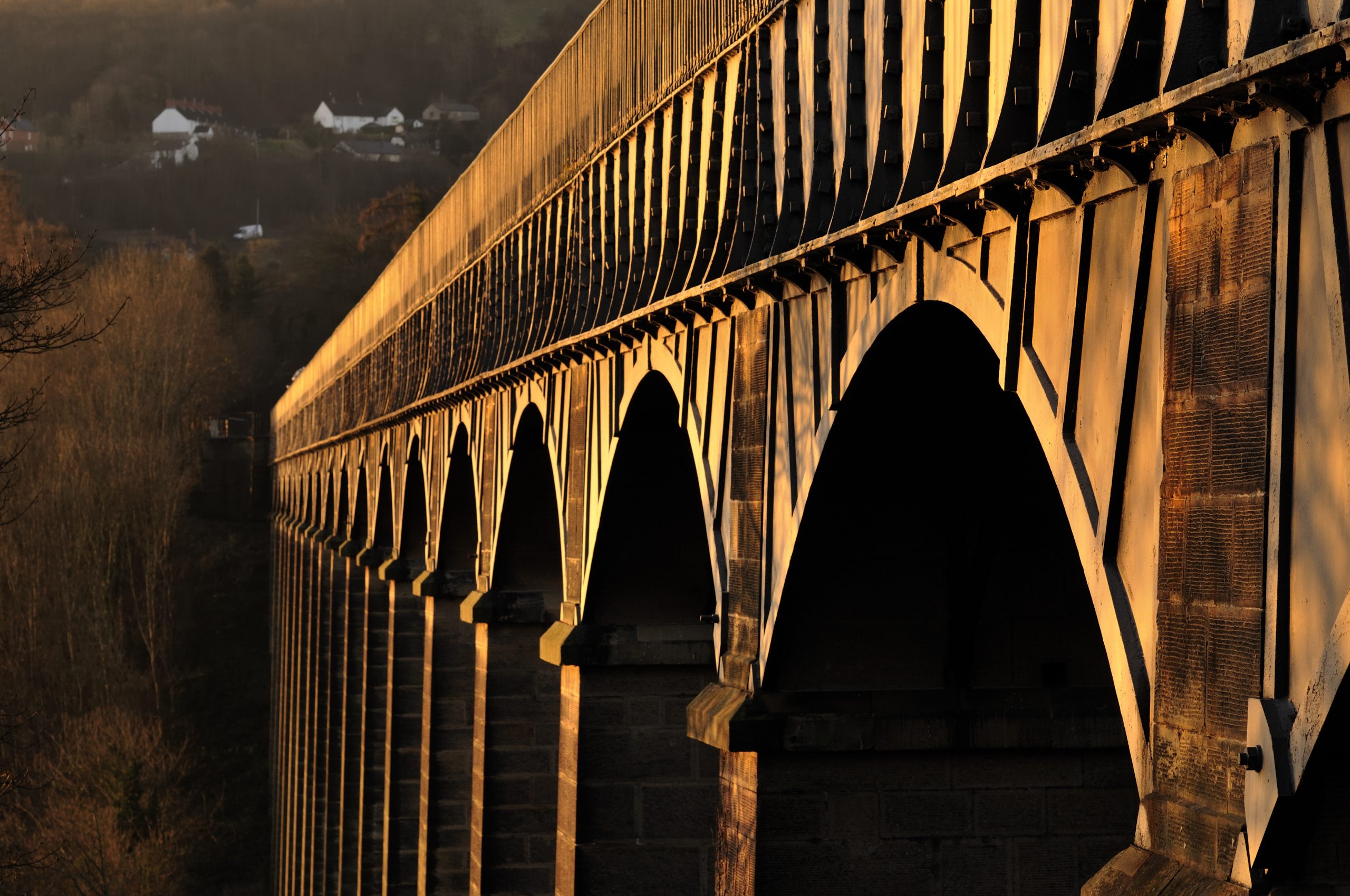
The chosen route presented some formidable engineering challenges, not the least of which was the need for a high-level crossing over the Dee Valley near Wrexham. The most straightforward section of the canal was in operation by 1795. For the more complex stretch across the Dee, Jessop first suggested a lower crossing, using locks to drop the canal in stages down the sides of the valley, but this cheaper method would have required back-pumping the water up to the canal’s higher levels.
The cast-iron trough, supported by 18 stone piers and an embankment, whether suggested by Jessop or Telford, enabled the canal to maintain its level uninterrupted, running straight across the valley. The name Pontcysyltte, meaning, literally, ‘the bridge that connects the river’, was actually taken from a triple-arched bridge further upstream.
Sign up for the Country Life Newsletter
Exquisite houses, the beauty of Nature, and how to get the most from your life, straight to your inbox.
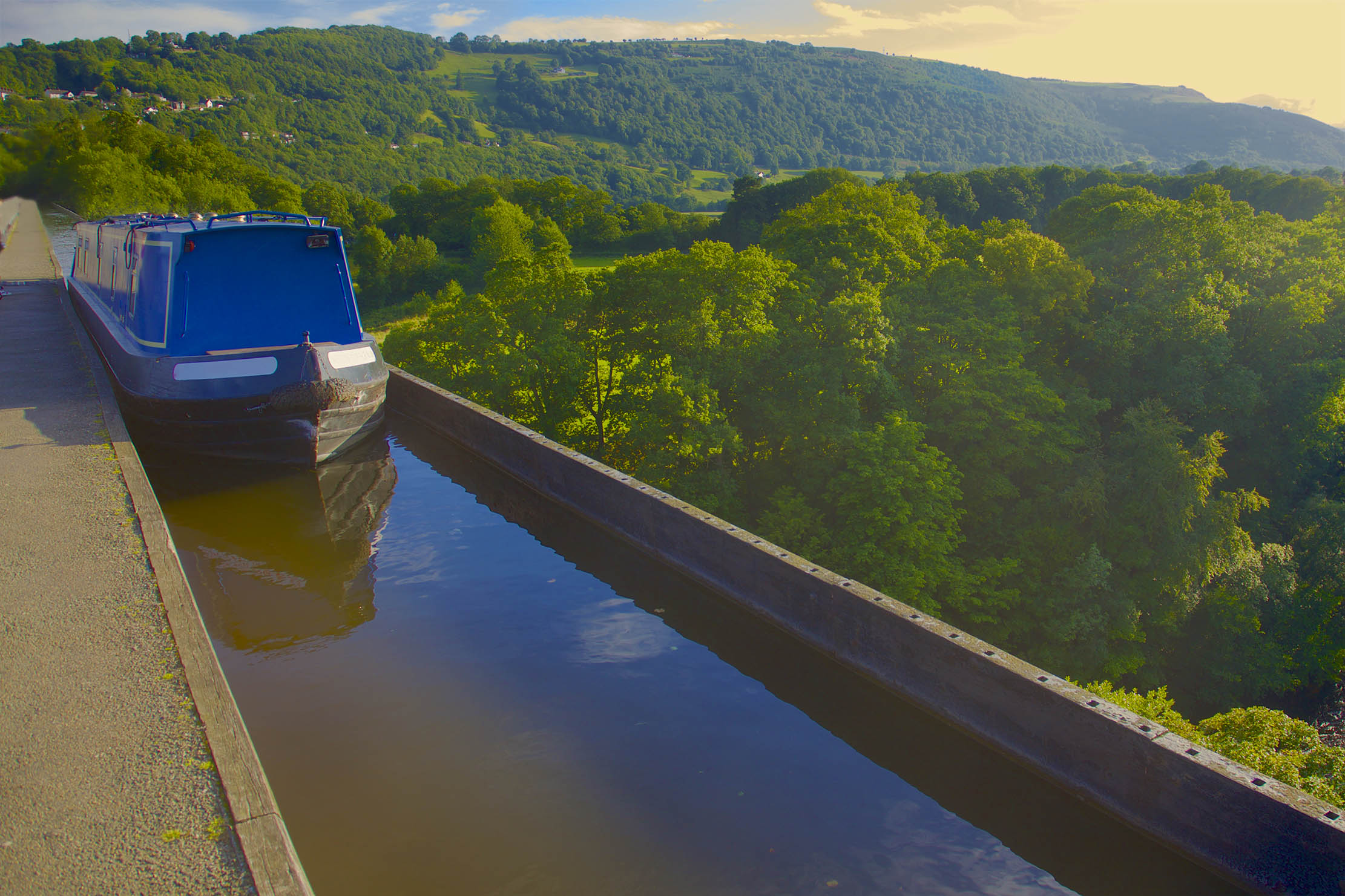
The master masons on the project, John Wilson and John Simpson, oversaw the building of the slender, tapered piers, the walls of which were left hollow from about 70ft upwards to reduce the structural load on the lower sections. The supporting arches above the 18 spans were of cast iron, the castings for which, together with the trough, were brought from Hazledine’s Plas Kynaston Foundry at nearby Cefn Mawr. Once everything had been bolted into place, Telford filled the aqueduct with water and embarked on a six-month testing period to ensure the structure was watertight. The aqueduct was finally opened on November 26, 1805.
Although the canal was formally closed to navigation in 1944, in the latter part of the 20th century it was revived once more, having become a rallying point for the canal-preservation movement. The aqueduct itself is now a tourist attraction, as well as a still-functioning waterway.
Hot to visit the Pontcysyllte Aqueduct
Located roughly half-way between Oswestry and Wrexham, the viaduct is easy to visit — and free of charge, including the visitor centre run by the Canal & River Trust at Trevor Basin. You can walk the towpaths over the aqueduct itself as well as around the surrounding areas of the Llangollen Canal; there's a popular route which takes about an hour and a half, not including stops for taking pictures.
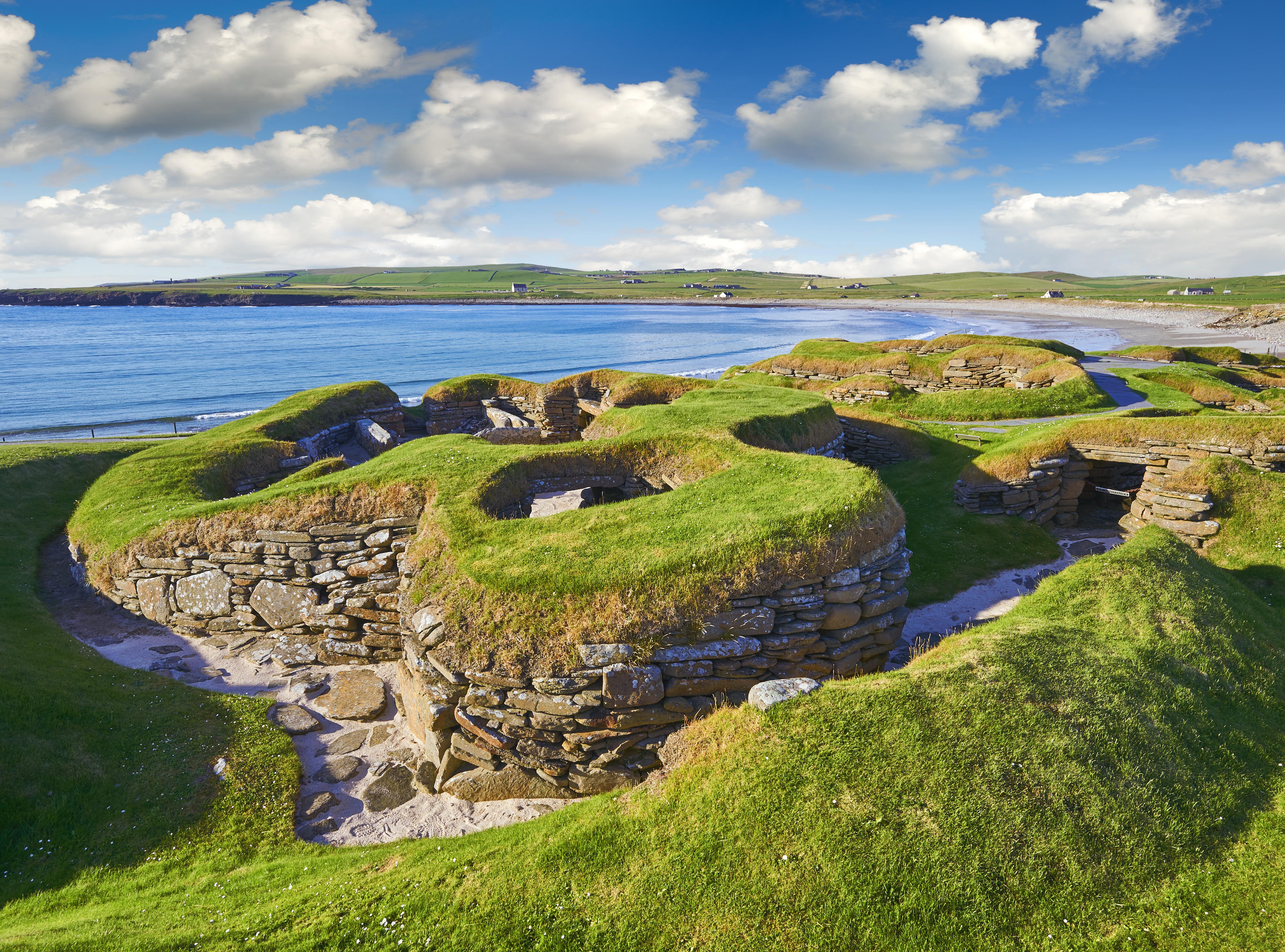
Skara Brae: The prehistoric village on Orkney that's older than Great Pyramid of Giza
The best-preserved Neolithic settlement in Europe isn't in a French cave or an Italian hillside; it's Skara Brae on Orkney,
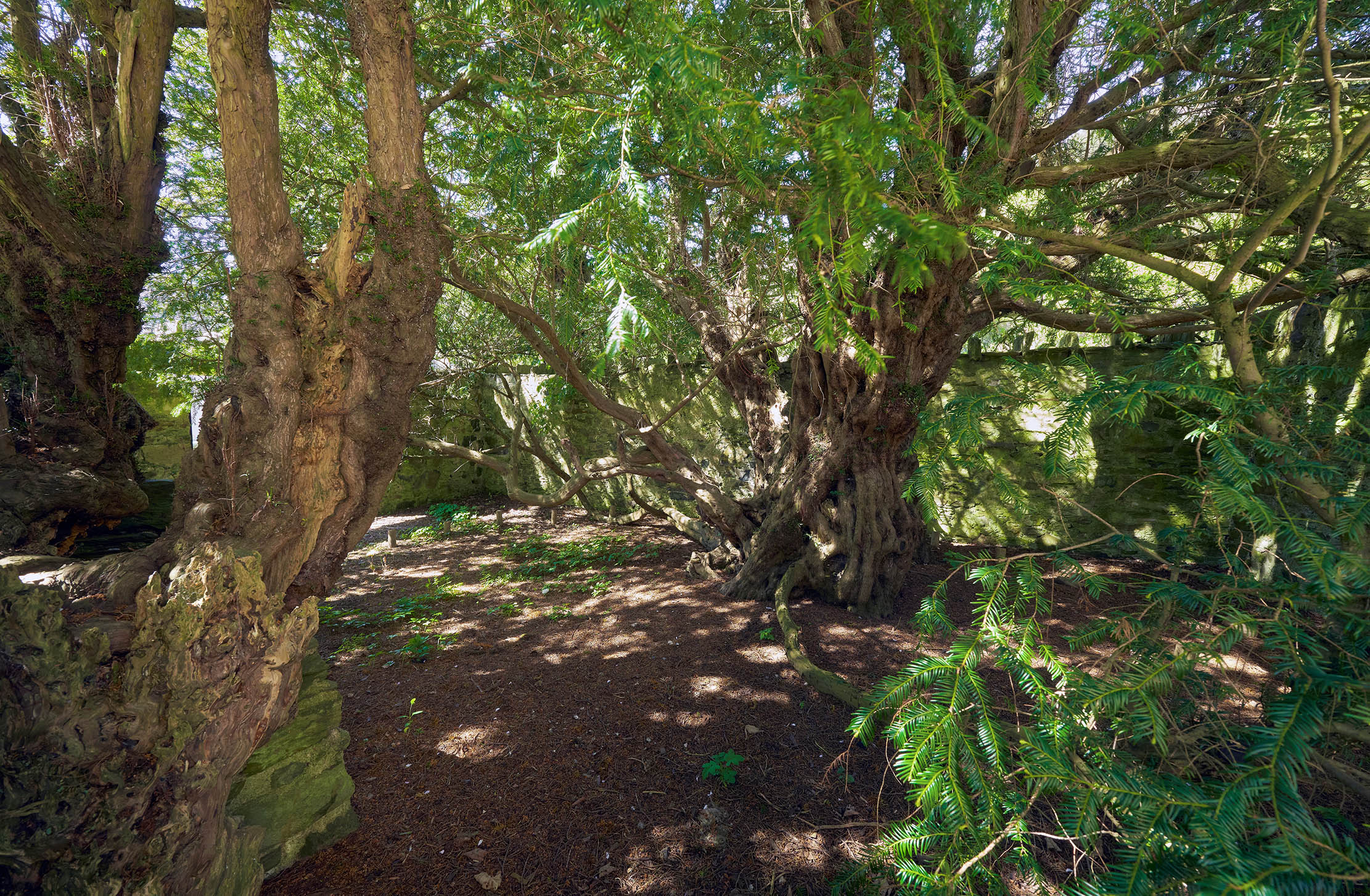
The Fortingall Yew, the Scottish tree which was already 3,000 years old when Christ was born
Yews are well known for their longevity, but few — if any — can top the 5,000-year-old Fortingall Yew.
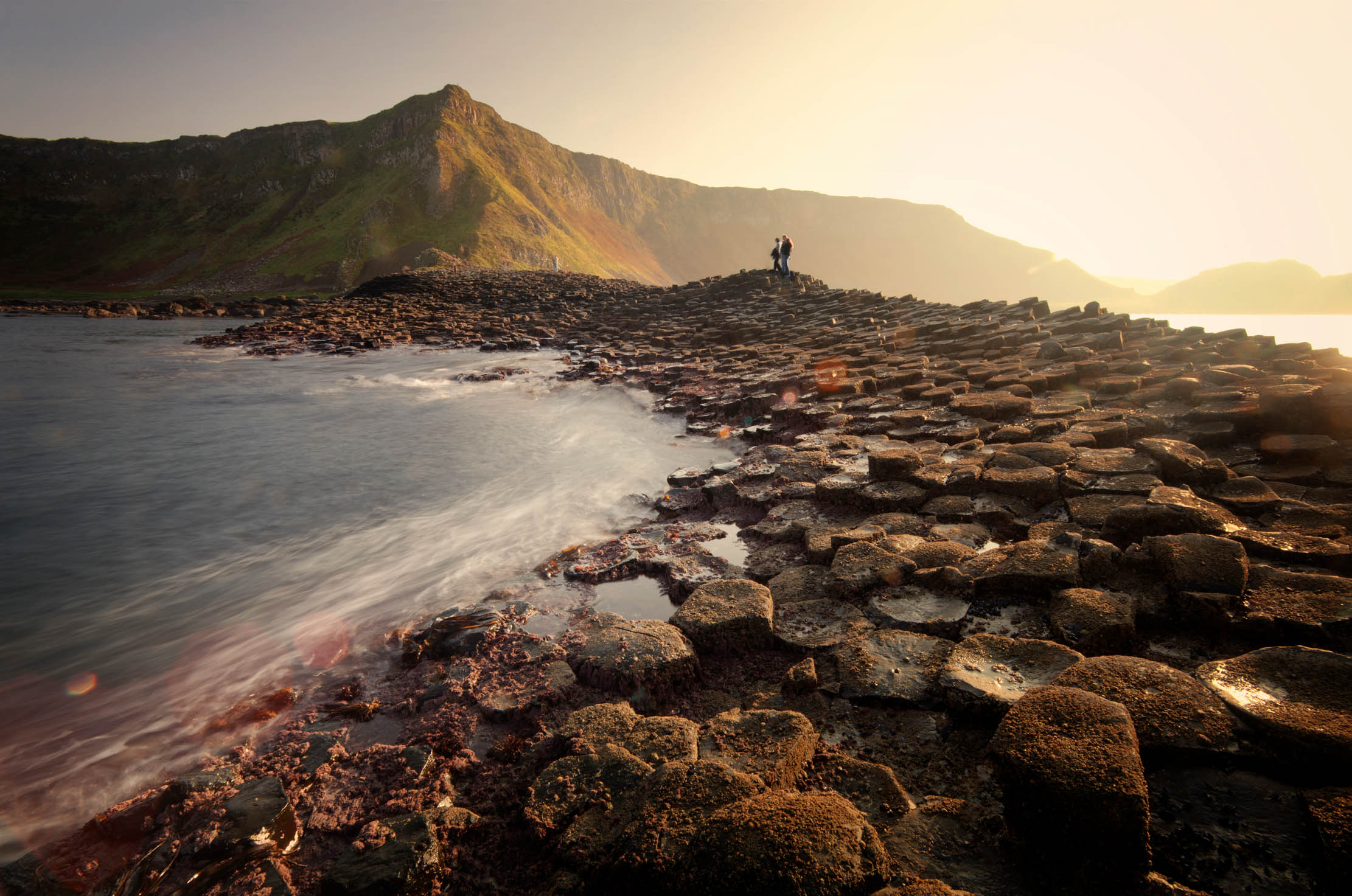
The Giant's Causeway
The Giant's Causeway is a geological marvel, a UNESCO World Heritage Site, and an unmissable stop for anyone heading to
Somerset born, Sussex raised, with a view of the South Downs from his bedroom window, Jack's first freelance article was on the ailing West Pier for The Telegraph. It's been downhill ever since. Never seen without the Racing Post (print version, thank you), he's written for The Independent and The Guardian, as well as for the farming press. He's also your man if you need a line on Bill Haley, vintage rock and soul, ghosts or Lost London.
-
 'To exist in this world relies on the hands of others': Roger Powell and modern British bookbinding
'To exist in this world relies on the hands of others': Roger Powell and modern British bookbindingAn exhibition on the legendary bookbinder Roger Powell reveals not only his great skill, but serves to reconnect us with the joy, power and importance of real craftsmanship.
By Hussein Kesvani
-
 Spam: The tinned meaty treat that brought a taste of the ‘hot-dog life of Hollywood’ to war-weary Britain
Spam: The tinned meaty treat that brought a taste of the ‘hot-dog life of Hollywood’ to war-weary BritainCourtesy of our ‘special relationship’ with the US, Spam was a culinary phenomenon, says Mary Greene. So much so that in 1944, London’s Simpson’s, renowned for its roast beef, was offering creamed Spam casserole instead.
By Country Life
-
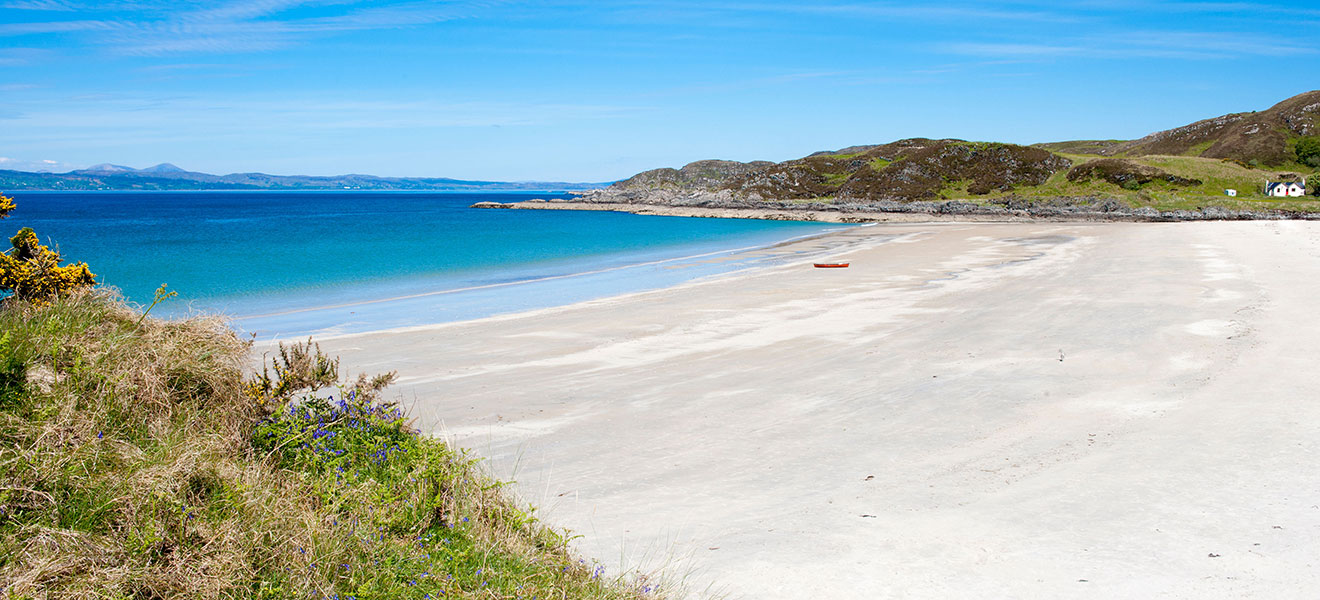 10 of Scotland’s most magical white sand beaches
10 of Scotland’s most magical white sand beachesWhat better day to celebrate some of Scotland's most stunning locations than St Andrew's Day? Here's our pick of 10 of the finest white sand beaches in the country.
By Country Life
-
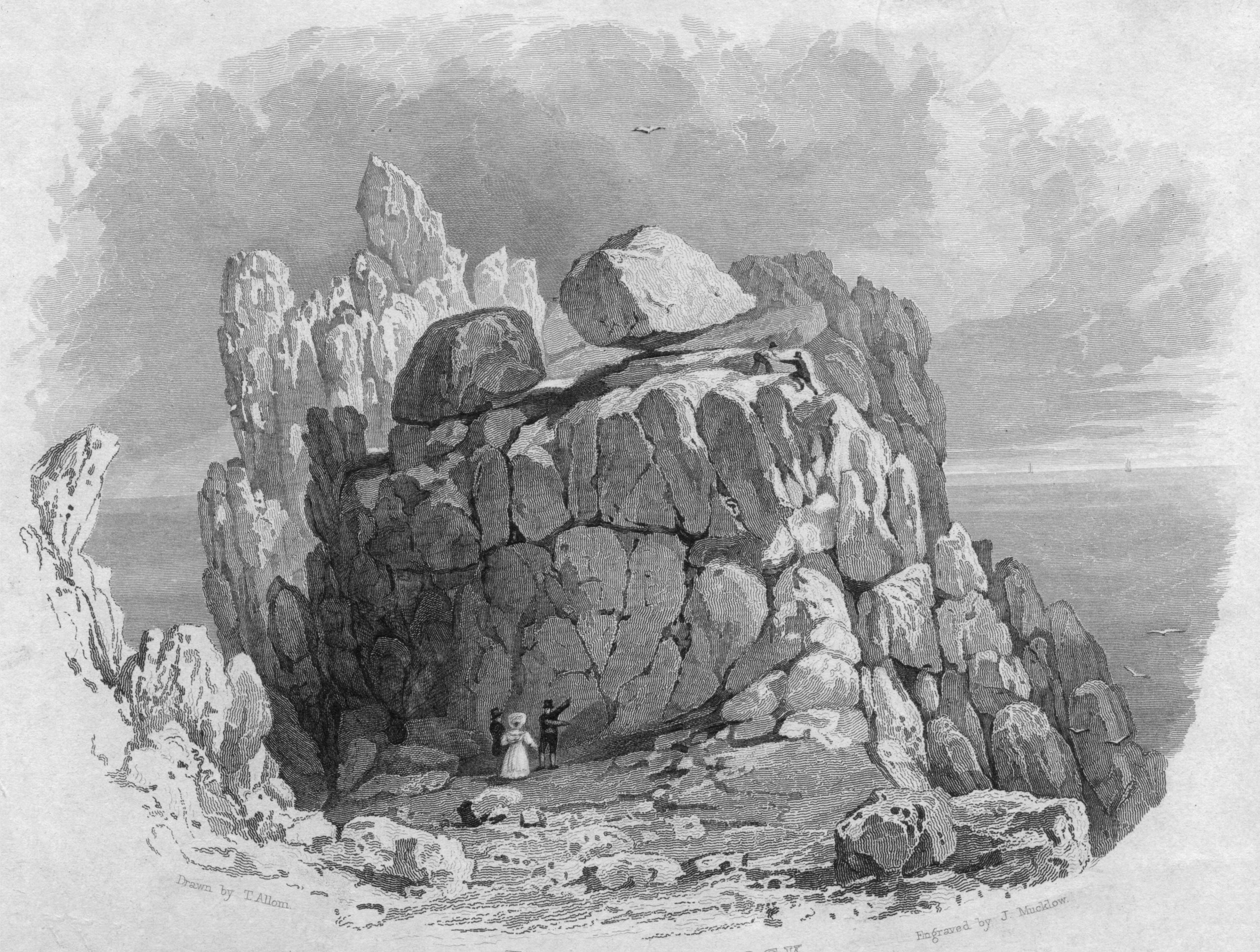 Curious Questions: Who dislodged Britain's most famous balancing rock?
Curious Questions: Who dislodged Britain's most famous balancing rock?A recent trip to Cornwall inspires Martin Fone to tell the rather sad story of the ruin and restoration of one of Cornwall's great 19th century tourist attractions: Logan Rock at Treen, near Land's End.
By Martin Fone
-
 Henley Festival: 13 things you'll see at the 'posh Glastonbury'
Henley Festival: 13 things you'll see at the 'posh Glastonbury'Revellers in ball gowns and dinner jackets, turning up on board £200,000 boats to dance and party while knocking back magnums of vintage champagne? It can only be the extraordinary Henley Festival, the high-end musical extravaganza that's a sort of Glastonbury-on-Thames for the (very) well heeled. We sent Emma Earnshaw along to see what it was like.
By Emma Earnshaw
-
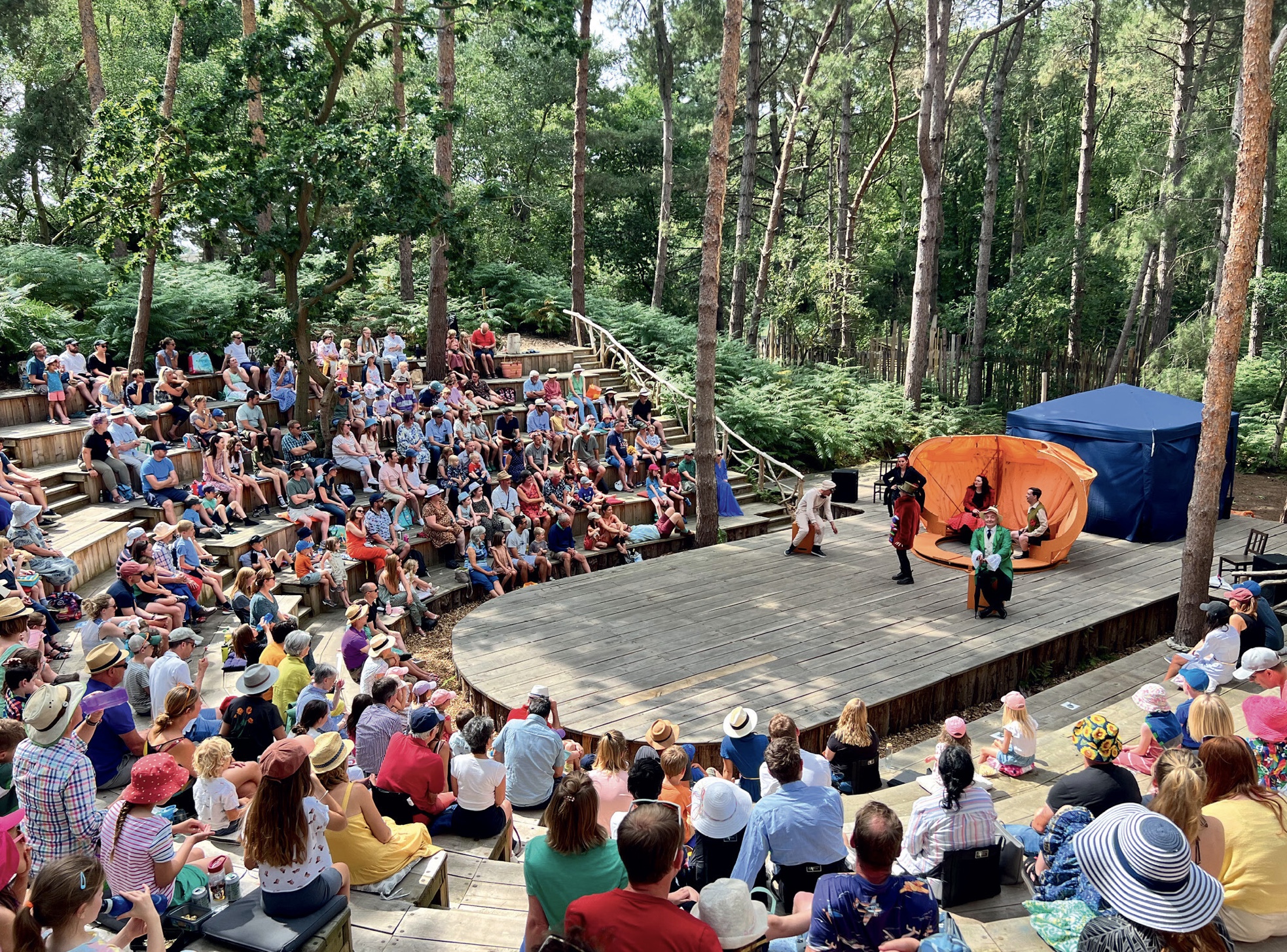 The best open air theatres in Britain
The best open air theatres in BritainAmid the sweet chestnuts, walnuts and cobnuts of a Suffolk farm, a natural amphitheatre has been transformed into a glorious sylvan venue for touring companies to tread Nature’s boards. Jo Cairdv pays a visit to the mesmerising Thorington Theatre, and picks out three more of the finest outdoor performance venues in Britain.
By Toby Keel
-
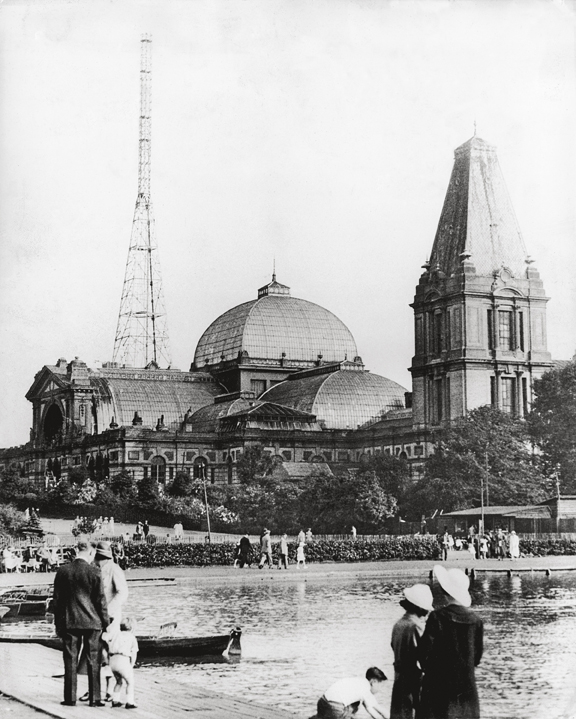 Alexandra Palace: How it's survived fires, bankruptcy and even gang warfare in 150 years as London's 'palace of the people'
Alexandra Palace: How it's survived fires, bankruptcy and even gang warfare in 150 years as London's 'palace of the people'Alexandra Palace has suffered every imaginable disaster, yet remains enduringly popular even a century and a half after its official grand opening. Martin Fone takes a look at the history of one of Britain's great public buildings.
By Martin Fone
-
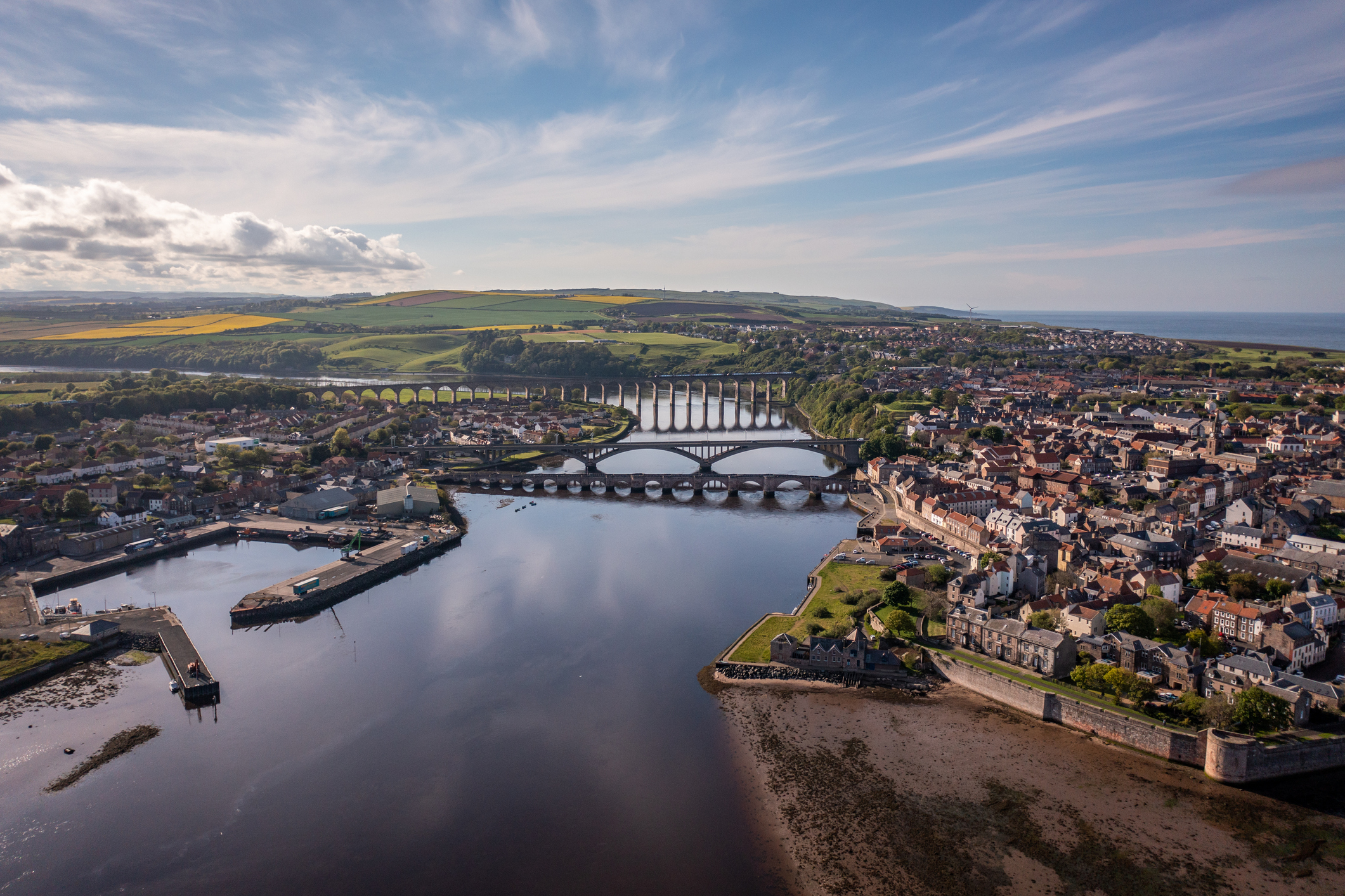 Berwick-upon-Tweed, Northumberland: The spectacular border town with a castle that changed hands 13 times
Berwick-upon-Tweed, Northumberland: The spectacular border town with a castle that changed hands 13 timesBerwick-upon-Tweed spent centuries as a pawn in Anglo-Scottish conflict; today, it's a charming border town with spectacular sights. Clive Aslet takes a look.
By Clive Aslet
-
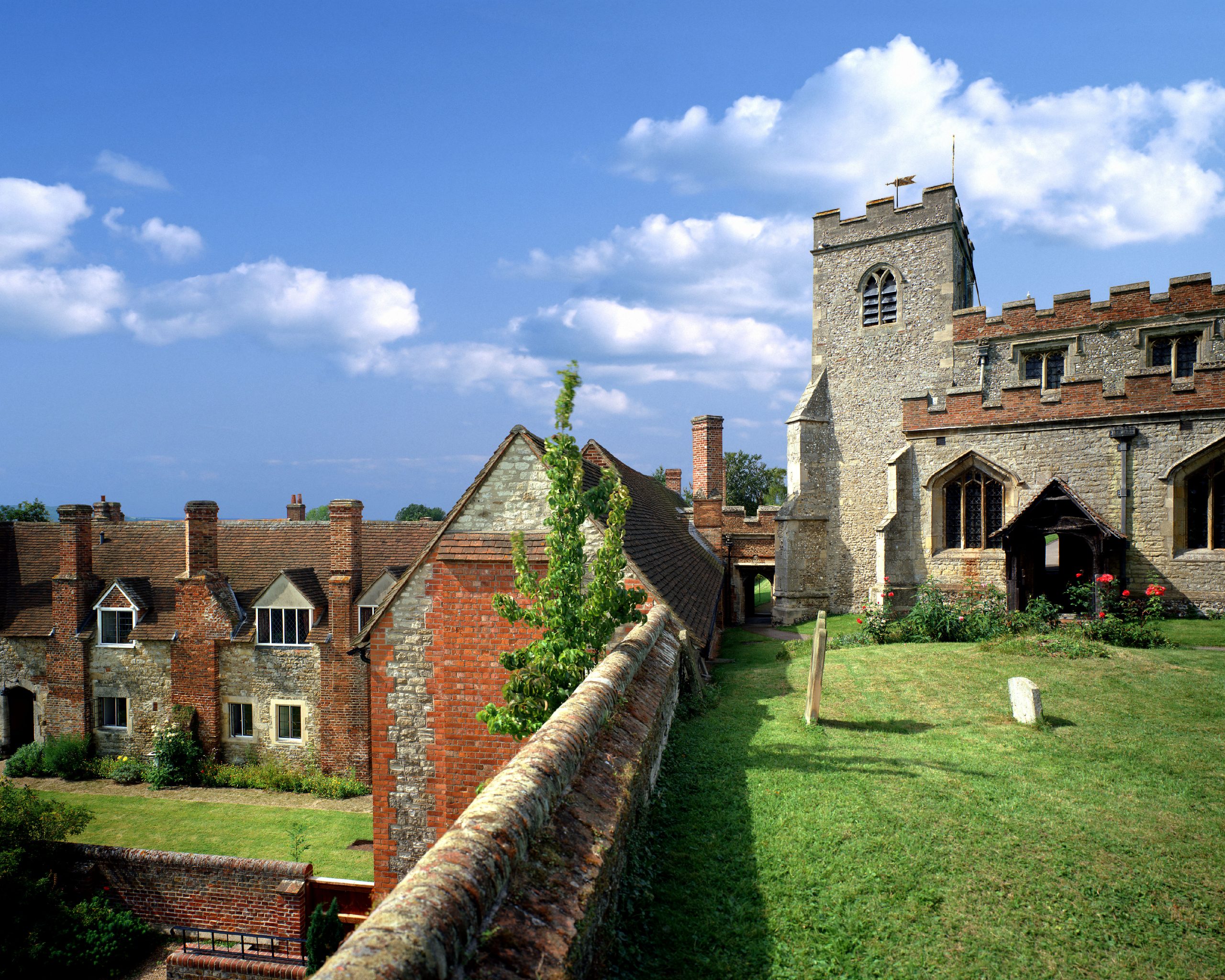 Ewelme, Oxfordshire: The medieval almshouses set up by Chaucer's grand-daughter and still running today
Ewelme, Oxfordshire: The medieval almshouses set up by Chaucer's grand-daughter and still running todayCountry Life's 21st century Grand Tour of Britain stops off at the remarkable church and almshouses at Ewelme, Oxfordshire.
By Toby Keel
-
 The Flying Scotsman: How the first 100mph locomotive became the most famous train in the world
The Flying Scotsman: How the first 100mph locomotive became the most famous train in the worldThe first train to officially hit 100mph may not even have been the first, and didn't hold the rail speed record for long; yet a century later its legend is undimmed. Jack Watkins celebrates the Flying Scotsman.
By Jack Watkins